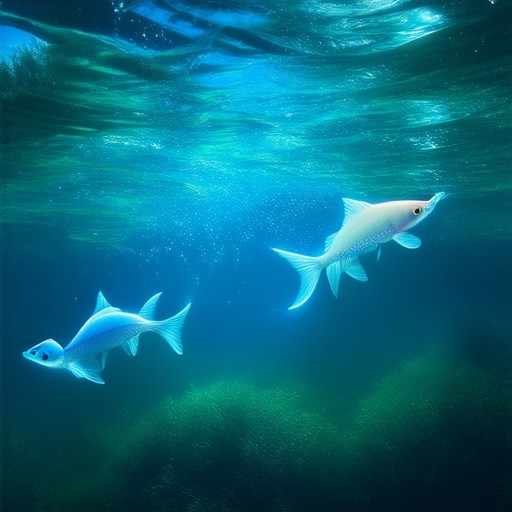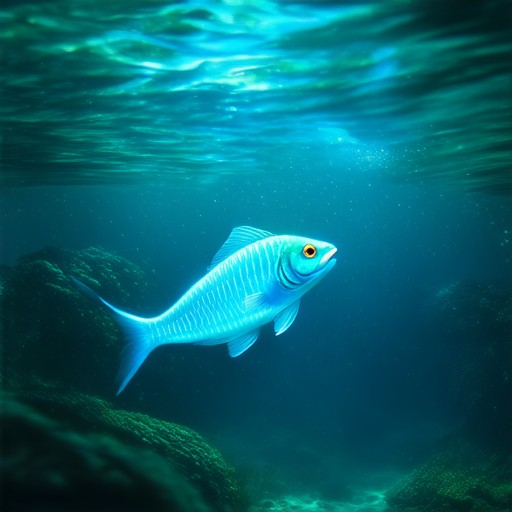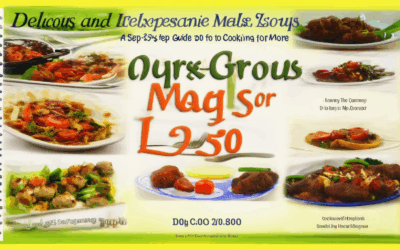With the growing demand for eco-friendly living, many individuals are seeking sustainable ways to enjoy seafood without compromising on taste or nutrition. However, navigating the complexities of sustainable seafood can be overwhelming, especially when faced with conflicting information and unclear guidelines. Whether you’re new to the concept or looking to refine your habits, this guide offers practical sustainable seafood tips to help you make informed decisions. From understanding the most sustainable seafood options to finding budget-friendly alternatives, this comprehensive resource covers everything you need to know to embrace a more environmentally conscious lifestyle. By following these tips, you can enjoy seafood while minimizing your ecological footprint, ensuring that future generations can also benefit from the ocean’s bounty. Let’s dive into the essential strategies and resources that will empower you to make smarter, more sustainable seafood choices today!

What is the Most Sustainable Way to Eat Seafood?
Eating seafood sustainably involves choosing fishing methods that minimize environmental impact while supporting local communities. Here’s a guide to enjoying seafood responsibly:
- Pole-and-Line Fishing: This method uses poles and lines to catch fish, causing less habitat damage compared to other methods. It’s particularly sustainable for species like tuna and billfish.
- Trap Fish: Trap fishing, often combined with escape gaps, allows fish to return to the ocean if not kept. This reduces bycatch and is more environmentally friendly than netting.
- Hand-Harvested Shellfish: Clams, mussels, and oysters are best hand-harvested using diving or raking, which preserves underwater habitats and ensures sustainable populations.
- Support Local Fisheries: Buying from fisheries certified by organizations like MSC (Marine Stewardship Council) ensures your seafood choices align with sustainable practices.
- Reduce Food Waste: Plan meals carefully to minimize waste, and freeze or share leftovers to maximize seafood use.
By adopting these practices, you can enjoy delicious seafood while protecting marine ecosystems for future generations. Remember to always source from reputable suppliers who prioritize sustainability.
How to Make Sustainable Seafood Choices?
When selecting seafood, it’s important to consider the environmental impact of your choices. Here’s a guide to making informed decisions:
- Understand Sustainability Labels:** Look for certifications like Marine Stewardship Council (MSC), Aquaculture Stewardship Council (ASC), and Dolphin-Safe certification. These labels indicate sustainable practices.
- Support Certified Programs:** Participate in programs like FishChoice or Seafood Watch. These organizations provide ratings and recommendations based on sustainability criteria.
- Know Your Fish:** Research the specific species and their habitats. For example, salmon can be farmed sustainably, while some species may be overfished.
- Choose Local and Seasonal:** Opt for seafood that’s caught or farmed locally. Fresh catches reduce transportation emissions and support regional economies.
- Reduce Food Waste:** Plan meals carefully to minimize waste. Proper storage and usage can extend the life of seafood products.
- Participate in Community Efforts:** Support local fisheries and community-supported fishery (CSF) programs. These initiatives promote responsible fishing practices and provide traceable, high-quality seafood.
By making mindful choices, you can enjoy delicious seafood while contributing to the health of our oceans. For more information and recipes, visit [Memories Restaurant](https://memories-restaurant.com/).

What Are Sustainable Seafood Practices?
Sustainable seafood practices emphasize responsible fishing, farming, and harvesting methods that protect marine ecosystems, ensure long-term biodiversity, and promote environmental health. These practices are essential for maintaining the balance of ocean life and supporting the sustainability of fish stocks for future generations.
Key Components of Sustainable Seafood
- Fisheries that adhere to catch-and-release methods to minimize bycatch and protect endangered species.
- Use of eco-certified fishing gear, such as monofilament hooks or escape gaps, to reduce harm to non-target species.
- Avoidance of overfishing by supporting fish populations through regulated catches and stock management.
- Support for aquaculture practices that follow sustainable guidelines, such as using renewable energy, reducing waste, and preventing pollution.
- Consumption of seafood species with lower environmental impact, such as those with high survival rates and slow growth.
Why Sustainable Seafood Matters
Sustainable seafood practices are vital for several reasons:
- Protecting Marine Biodiversity: Overfishing and habitat destruction threaten marine ecosystems, which support countless species, including many that are not fish, such as corals, plankton, and birds.
- Reducing Carbon Footprint: The ocean absorbs significant amounts of carbon dioxide, and sustainable practices help mitigate its effects while preserving coastal blue carbon ecosystems.
- Ensuring Food Security: Sustainable fishing and farming methods help maintain global food supplies and reduce reliance on less sustainable sources.
Practices to Adopt as Consumers
- Choose seafood with certifications like MSC (Marine Stewardship Council) or ASC (Aquaculture Stewardship Council) to ensure sustainability.
- Ask retailers or restaurants about the sourcing of the seafood you purchase or consume.
- Participate in community-supported fishery programs or buy directly from local fishermen who practice sustainable methods.
- Reduce food waste to minimize the environmental impact of seafood production.
- Advocate for stricter regulations on fishing and farming practices in your local area.
Benefits of Sustainable Seafood
By supporting sustainable seafood practices, you contribute to:
- Preserving marine ecosystems and wildlife.
- Protecting the livelihoods of fishers and communities dependent on healthy fisheries.
- Promoting innovation in sustainable fishing and aquaculture technologies.
- Encouraging responsible consumption patterns that align with environmental goals.
NOAA Fisheries provides detailed information on sustainable fishing practices and regulations. For more insights, explore MSC Certified Seafood and ASC Aquaculture Certification .

Five Ways to Make Wild-Caught Seafood More Sustainable
- Support sustainable fishing practices by purchasing from certified sustainable sources, such as those approved by the Marine Stewardship Council (MSC).
- Minimize bycatch by working with fishermen who use advanced gear and techniques that reduce the impact on non-target species.
- Participate in seafood stewardship programs or community-supported fishery (CSF) initiatives to ensure responsible harvesting methods are used.
- Reduce ghost fishing by reporting and removing derelict fishing gear that continues to trap fish long after it’s been abandoned.
- Advocate for policies that promote stricter regulations on fishing quotas and protect critical habitats.
How to Find Sustainable Seafood
To find sustainable seafood, consider the following organized approach:
- Look for Certifications: Seek products certified by reputable organizations like the Marine Stewardship Council (MSC) or Aquaculture Stewardship Council (ASC). These certifications indicate environmentally responsible practices.
- Shop at Specific Retailers: Visit stores like Whole Foods Market or Trader Joe’s, which often stock sustainably sourced items. Check for labels indicating “sustainable” or “responsibly caught” seafood.
- Visit Local Markets: Explore local seafood markets or fishmongers for fresh, locally-sourced fish. This reduces transportation impact and supports regional economies.
- Farmers’ Markets: Many small-scale farmers at farmers’ markets practice sustainable farming. Engage with vendors to inquire about their practices and source locally whenever possible.
- Check for Brand Labels: Look for brands known for sustainability, such as Alaska Salmon, which is recognized for its responsible practices. Verify through packaging or company websites.
- Use Recipe Guides: Utilize recipe platforms or cookbooks focusing on seasonal and local ingredients to ensure dishes use sustainable seafood choices.
- Support Community-Supported Fisheries (CSFs): Subscribe to CSFs for direct access to sustainably caught seafood, supporting local fishermen and ensuring eco-friendly practices.
By following these steps, you can make informed choices that contribute to environmental conservation while enjoying delicious seafood.

What is a cheap alternative to cod?
Cod is a popular fish known for its flaky texture and mild flavor. If you’re looking for a budget-friendly alternative, consider these options:
- Haddock: A good substitute with a slightly firmer texture and a touch of extra flavor.
- Pollock: Offers a milder taste and softer texture, often at a similar price point as cod.
- Tilapia: A versatile and affordable option with a sweeter flavor profile.
- Mackerel: Provides a heart-healthy option with a stronger, oilier taste.
- Sole: Delicate and similar in flavor to cod, though potentially harder to find.
- Hake: Known for its tender texture and mild flavor, though less commonly available.
When choosing, consider factors like availability, cost, and personal preferences. Experiment with different cooking methods to find the best substitution for your needs.




0 Comments